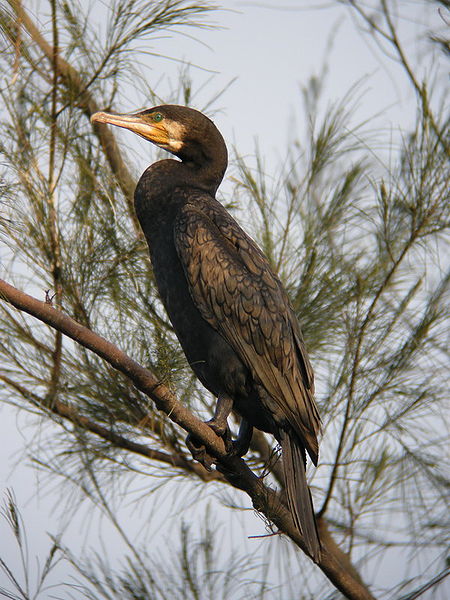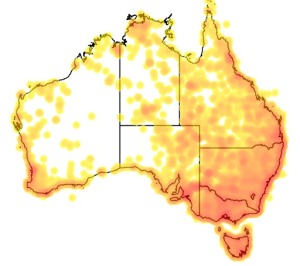
©Charlie: Great Cormorant (Phalacrocorax (Phalacrocorax) carbo) on Myall River at Bulahdelah, NSW. Possibly juveniles in foreground.
Colours
Distinguishing features
Adults are black. It has a longish tail and yellow throat-patch. Adults have white thigh patches in the breeding season.
Juveniles have a duller browner plumage and their facial skin is duller. (Wikipedia)
Size
- From 80 cm to 85 cm (Length of specimen)
Wingspan
- From 120 cm to 160 cm
Synonyms
Distribution
Distribution and habitat preferences
This is a very common and widespread bird species. It feeds on the sea, in estuaries, and on freshwater lakes and rivers. Northern birds migrate south and winter along any coast that is well-supplied with fish. (Wikipedia)
Local abundance
- Cape Kidnappers, New Zealand: common
Audio recordings
Diet
It can dive to considerable depths, but often feeds in shallow water. It frequently brings prey to the surface. A wide variety of fish are taken: cormorants are often noticed eating eels, but this may reflect the considerable time taken to subdue an eel and position it for swallowing, rather than any dominance of eels in the diet. (Wikipedia)



